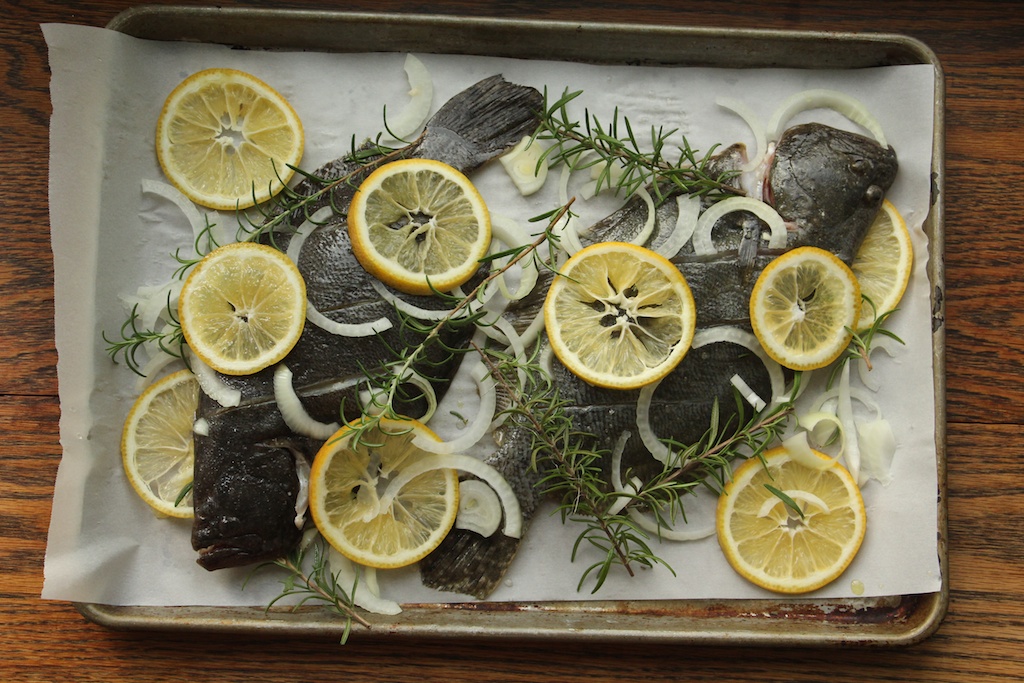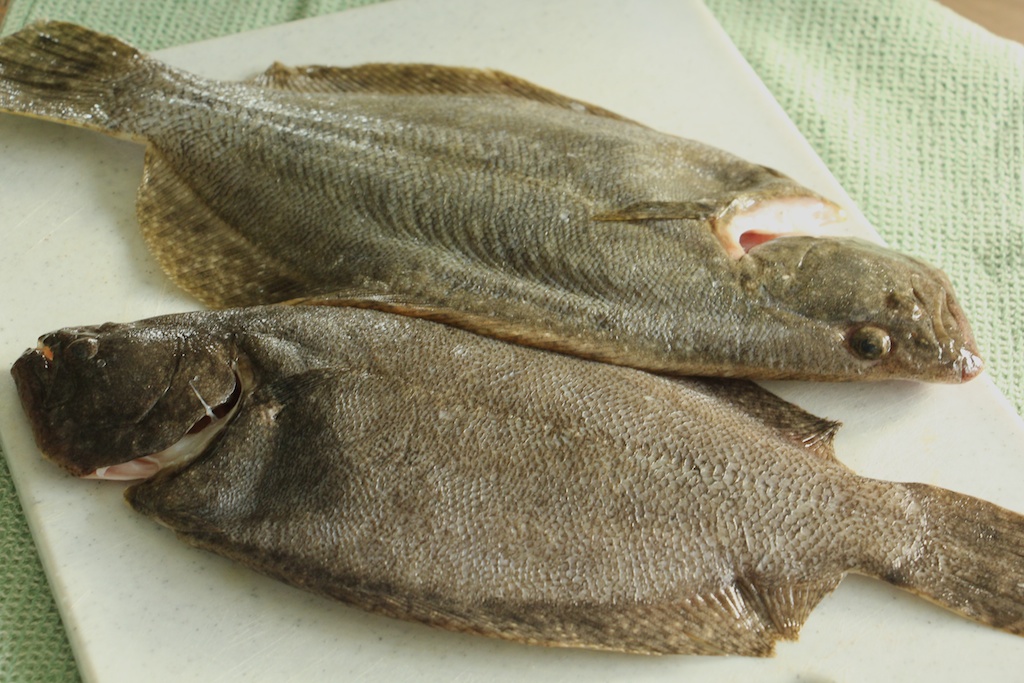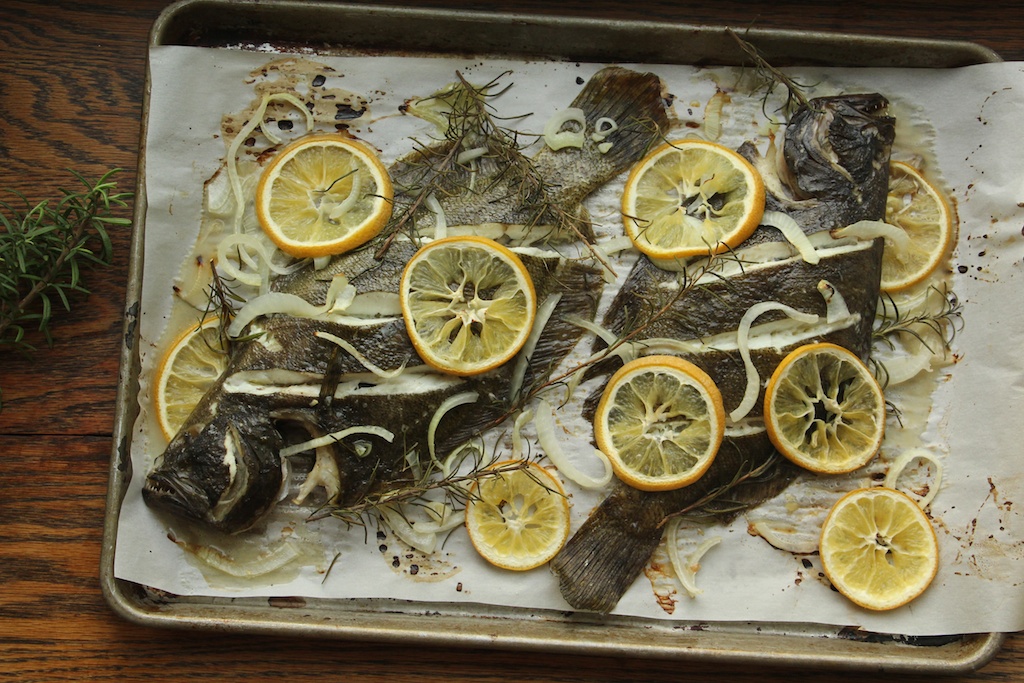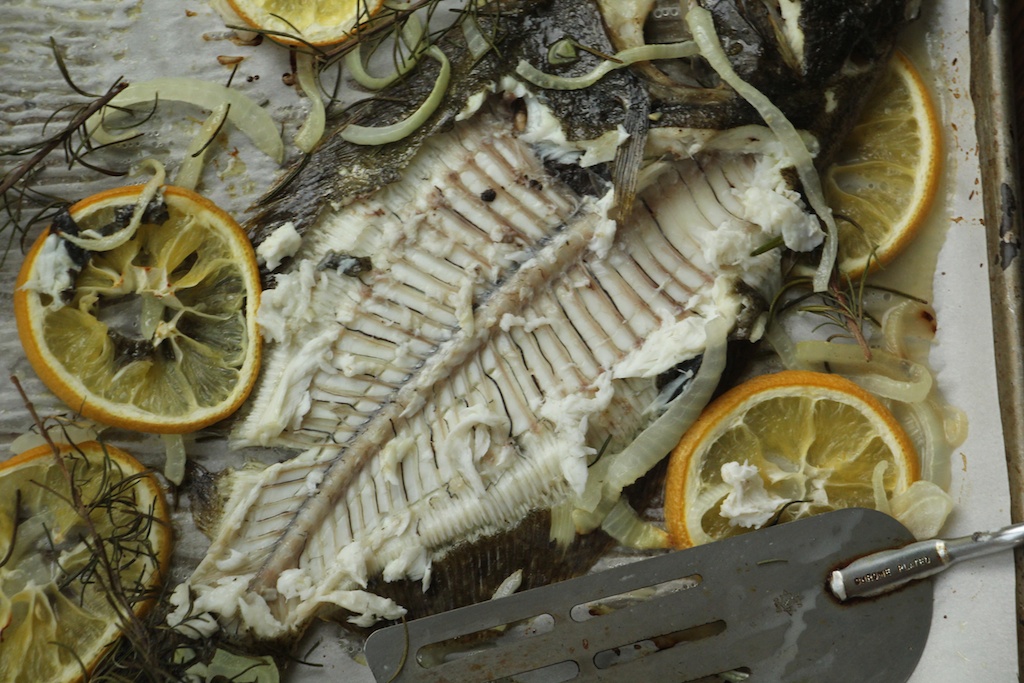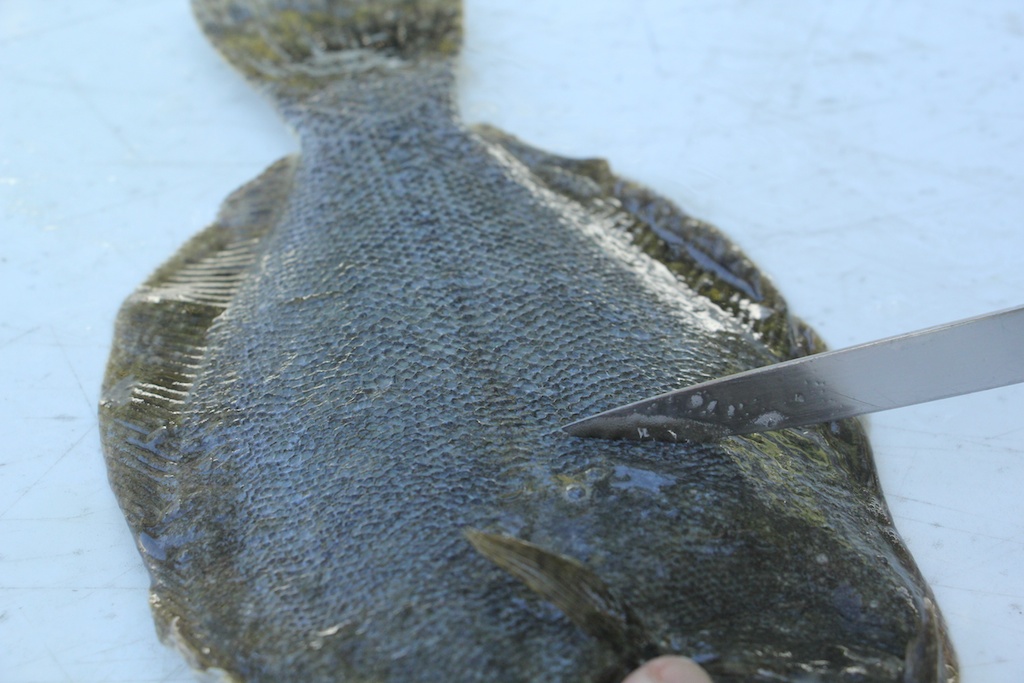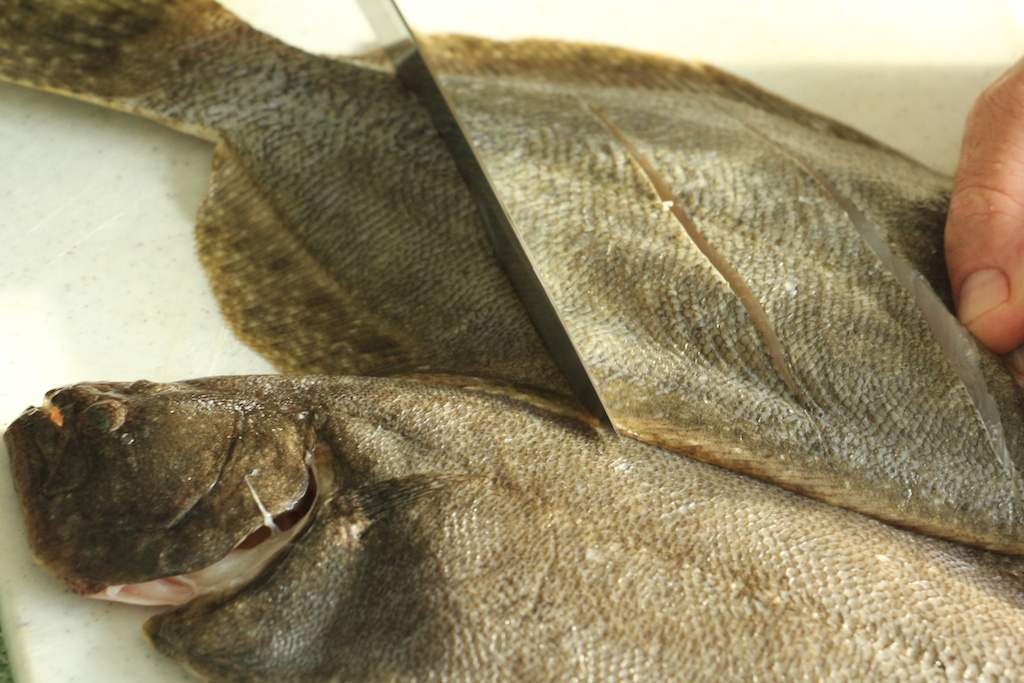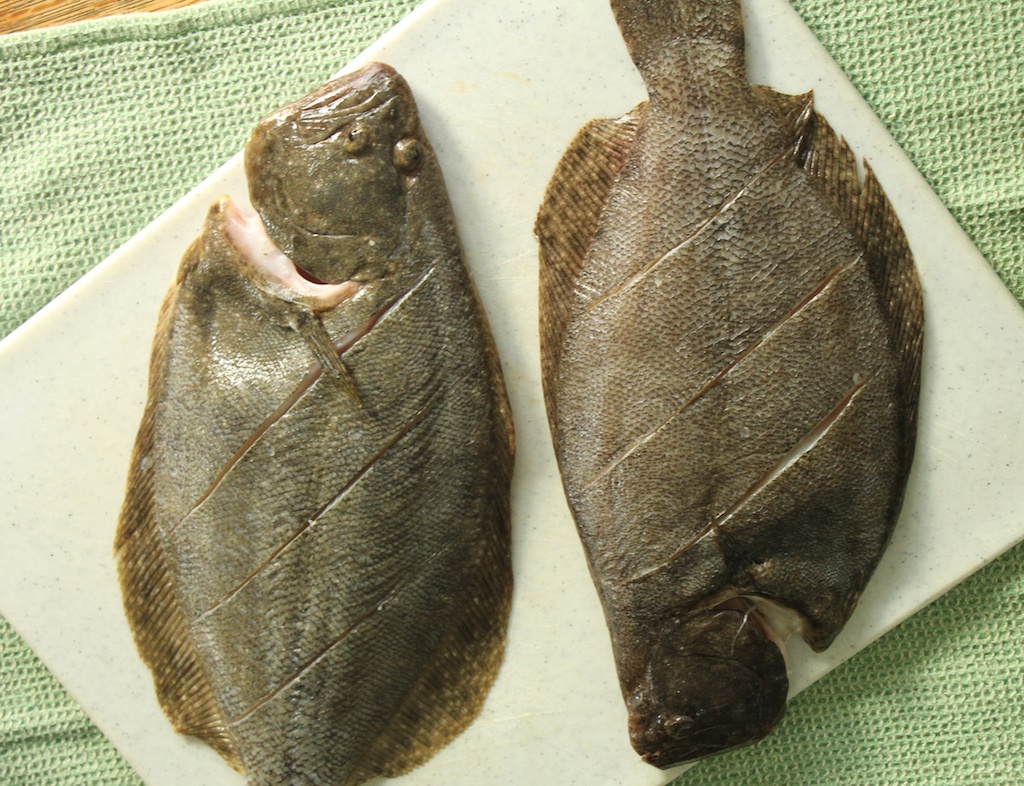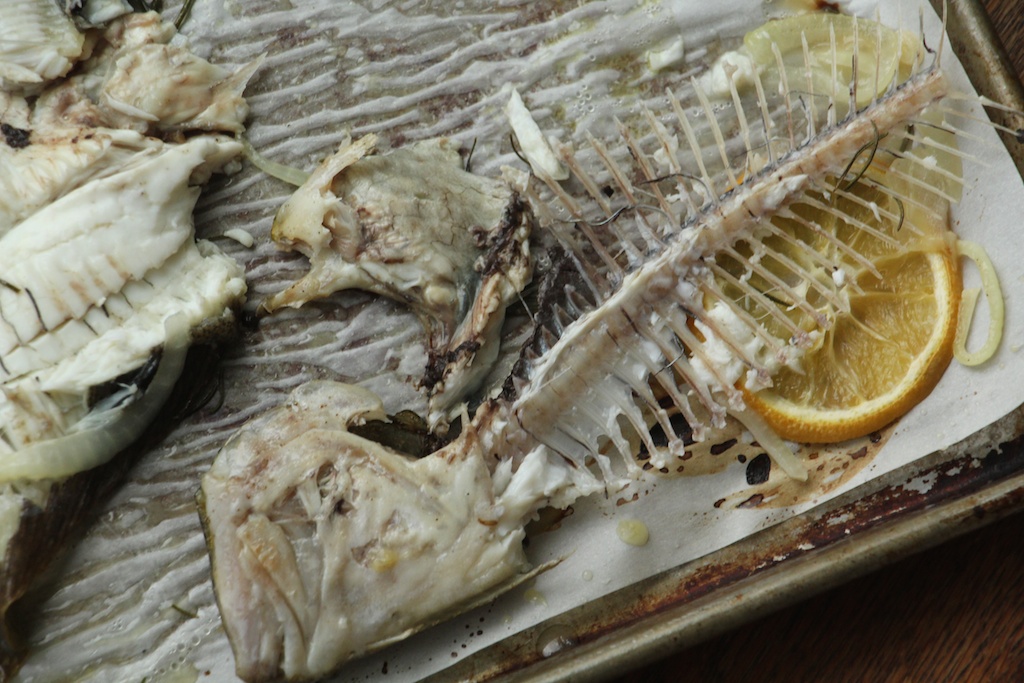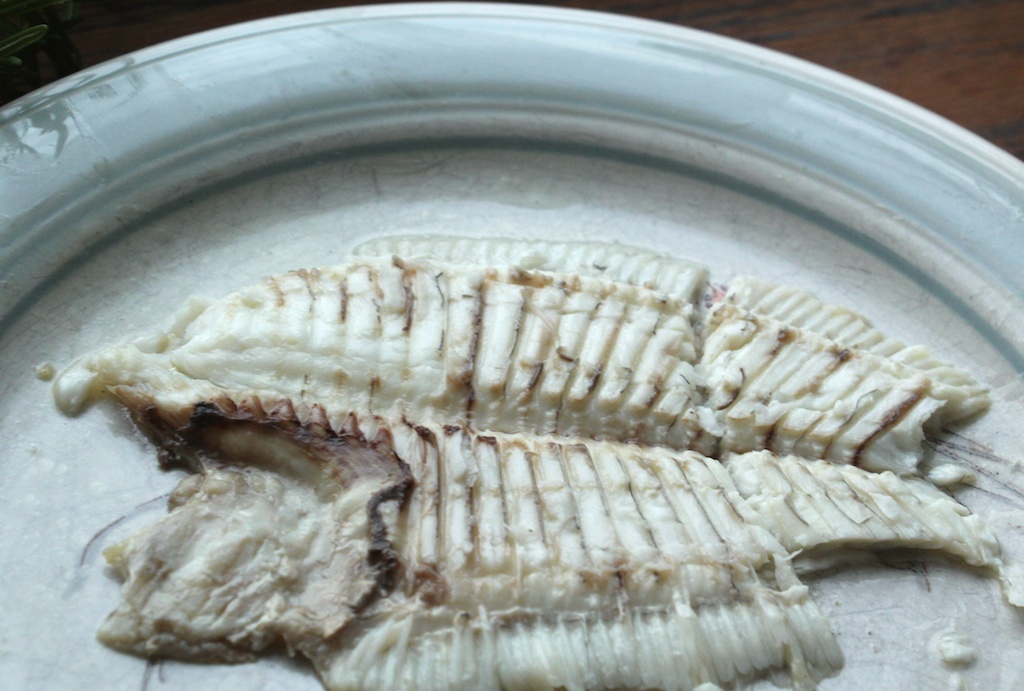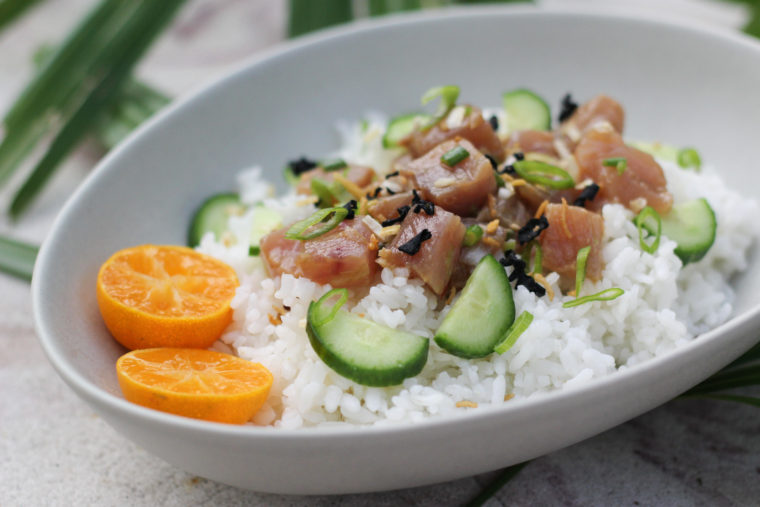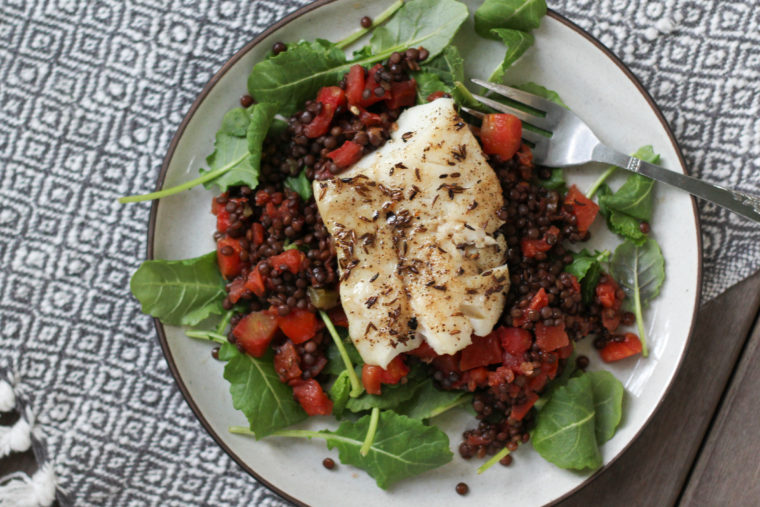I was reading an online travel guide to Portugal recently and found an entire discussion board on restaurants that offer filleted fish, as opposed to the traditional whole fish served there. I was surprised how many people, mostly Americans, explicitly did not want to eat fish served whole.
You can find incredible whole fish recipes around the world, such as Portuguese Peixe Assado no Forno, Jamaican Escovitch, and Indonesian Ikan Bakar.
The skin seals in moisture and the bones provide gelatin, leading to optimal taste and texture. It’s also a practical way to make the most of a small fish that can be tedious to fillet.
Bones can be daunting, but with a general idea of fish anatomy, it’s not hard to eat around them. Once you remove (or eat) the top fillet, gently lift away the bones in one flat piece, leaving the bottom fillet.
Each bite of this fish is tender and scented with rosemary, meyer lemon and sweet Vidalia onions. If you’re not quite ready to tackle a whole flounder, try this recipe with crab stuffing or potato chip flounder with dill sauce.
Rosemary Roasted Flounder
Ingredients:
- 2 whole flounder, 1-2 pounds each, gutted and scaled
- 1 cup thinly sliced Vidalia onion
- 1 Meyer lemon, thinly sliced and seeds removed
- 4 teaspoons olive oil
- 3-4 sprigs rosemary
- 1/2 teaspoon coarse kosher salt
- 1/4 teaspoon black pepper
Directions:
Prepare the fish: Gut the fish and remove the gills. Thoroughly scale both sides by scraping from tail to head with a knife. Rinse the fish well and pat it dry with paper towels.
Score the fish several times diagonally on the top (dark side) through the skin and flesh, down to the the bones.
Heat the oven to 350.
Rub each fish with a teaspoon of olive oil on each side, then sprinkle with salt and pepper. Place the fish on a parchment-lined baking sheet, dark side up. Arrange the onions, lemons, and rosemary all around the fish, including some underneath the fish.
Roast the fish for 18-25 minutes, depending on thickness. When it’s done the flesh will be opaque white and a knife can be slipped through easily in the thickest part.
To serve, slice around the top fillet. Lift the fillet with a spatula and move it to a plate. Remove the bone structure, which is connected from head to tail, leaving the bottom fillet ready to serve.

